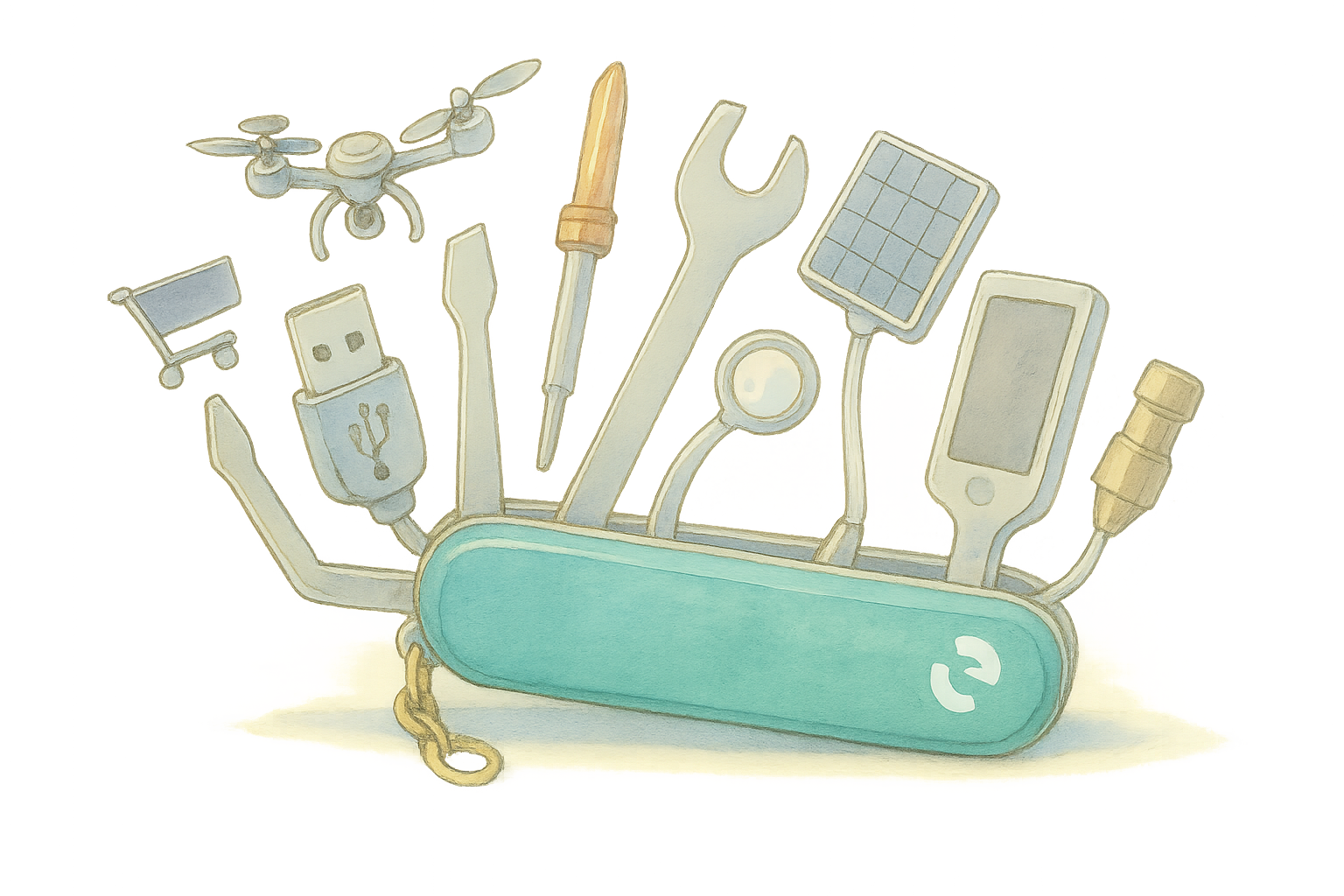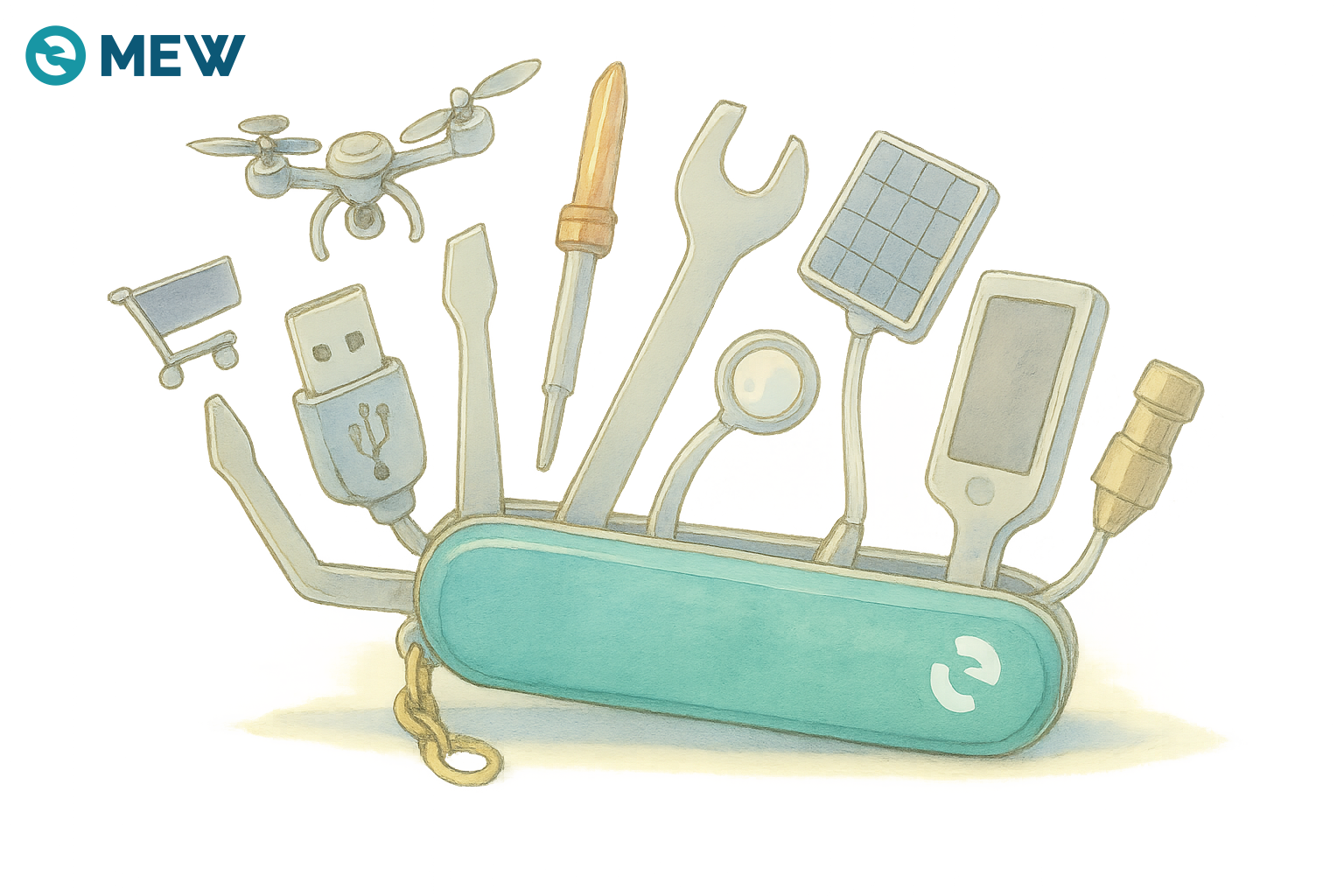In the first half of 2025, the crypto space in the US has gone through what might be a period of the fastest, most dramatic development in crypto history. Incremental achievements in blockchain innovation over the past ten years and changes in legislation over the recent months are culminating in the creation of faster, bigger, better, crazier crypto tools.
Every major player in crypto is racing to become the ‘everything app’ for your assets. Coinbase, Kraken, Gemini, and Robinhood are all trying to bring traditional finance and crypto together in one convenient 24hr-everything-everywhere-all-at-once platform. Everyone is offering a debit and credit card, sometimes with cashback in crypto! Visa and Mastercard are diving all the way in with seamless crypto-to-fiat-and-back transactions, so users don’t even have to notice. It’s very exciting.

The real MVP
But you know what’s the original ‘everything app’ for assets? Your self-custody crypto wallet.
Consider. Bitcoin was the first crypto, and whether you think about it as gold, money, or a pet rock, it was just one thing for a long time. But then Ethereum and smart contracts came along, making any kind of asset possible on the blockchain — an innovation so big, we are only just understanding the full implications ten years later.
And the other major innovation that made the crypto era that you are witnessing possible? The self custody (aka noncustodial) Ethereum wallet, the real MVP of early crypto adoption. While exchanges and centralized platforms scrambled to keep up, noncustodial wallets like MEW supported every kind of Ethereum asset you could throw at them.
The self custody wallet has always been the one place where you could hold everything: stock (ICOs, airdrops), cash (stablecoins), APY (staking rewards), stores of value (bitcoin), property and data (NFTs), derivatives (liquid staking tokens), and anything else those crazy crypto kids could imagine. How powerful is the self-custody wallet? Let’s see what it can hold.
Stock- and commodity-like assets
The original cryptocurrency Bitcoin, as well as many of the biggest cryptocurrencies (Ethereum, Ripple, BNB Chain, Solana) are probably most similar to stocks or commodities in traditional finance. They are like companies or valuable resources that market participants buy because they believe in their value over time, but they can also fluctuate quite a bit. In fact, crypto is infamous for its volatility. One of the first questions that crypto beginners have is “Why would I make payments with something that is worth 80k today and 50k tomorrow? I don’t pay for coffee with my stocks.” Well, that issue is solved, because now we have stablecoins, cash-like tokens tied to USD. In a self-custody wallet, a user can swap in and out of stablecoins at any time, without having to wait for market opening or transaction approval before they can make a cash payment or invest it back into another crypto.
Cash-like assets
Stablecoins – cryptocurrencies tied to a real world fiat currency, usually the US dollar – started emerging in the mid 2010s, and over the past ten years became the most widely used cryptocurrency tool. Stablecoins address the concerns of crypto’s volatility, making real world payments and crypto-to-fiat conversions much simpler. Even more importantly, the US government is now waking up to the way USD-backed stablecoins open global access to the US dollar. With stablecoins, self-custody wallets anywhere in the world can hold a USD-equivalent balance right alongside cryptos that are more like stocks or commodities.
Property- and data-like assets
NFTs are currently past their hype era, but while $100k jpegs of ugly monkeys might be out, the format itself is not going anywhere. Needless to say, cash and stocks are not the only things that can hold value. NFTs represent unique objects and pieces of data, meaning that artworks, deeds to real estate, identification documents, and many other items (of the kind that you’d grab first if your house was burning down) can live securely in a self-custody wallet.
Real world assets tokenized
Already, we see that a self-custody wallet is unlike anything that existed in finance before. You couldn’t hold stocks in your banking account, or liquid cash savings in your brokerage account. You definitely couldn’t hold paintings or valuable documents in either. Now, we see types of assets emerging onchain that have never existed or been effectively realized before. Fractional ownership was not invented by crypto, but now any real world item or asset can be tokenized, offering immediate and borderless access to investment to anyone in the world. And all that value – stocks, commodities, national currencies, property, art, personal data, loans, yields, bonds, equities – can be truly owned and held in one ‘everything app’, the self-custody wallet.
Self-custody is endgame
In June 2025, Robinhood gave one of the splashiest presentations of a tradfi/defi ‘everything app’ yet, introducing stock tokenization and access to onchain private equity investment for European users, and cryptocurrency staking for US users.
Guess what? Staking has been available to self-custody wallet users anywhere in the world since the first day staking started on Ethereum, or any other proof-of-stake chain. Stocks? Obviously, that can’t happen without proper licensing by governments that regulate those stock markets, but once stocks are tokenized and available onchain on a decentralized blockchain network, self-custody wallets will support them immediately.
Even for Robinhood and Coinbase, the current leaders of the tradfi/defi fusion trend, self-custody is the endgame. Although this is not available yet, Robinhood claims that it wants to allow users to move tokenized stocks to any wallet of their choice. Coinbase added the self-custodial Coinbase Wallet to their suite of products back in 2018, so it’s reasonable to think that as tokenized stocks become available on the exchange, Coinbase will allow users to transfer them to their Coinbase Wallet. Self-custody of traditional market stock? Unironically groundbreaking.
In the end, self-custody is crypto’s unique value proposition. Right now, most finance ‘everything apps’ are working on improving access: global, 24hr access to investment and liquidity that was not available to most people in the world before. Access is important, but it doesn’t mean anything if you are just putting your money to work for someone else and could lose control of your investment at any time. Self-custody is how we make sure we are not doing more of the same in finance while expecting a different result.

